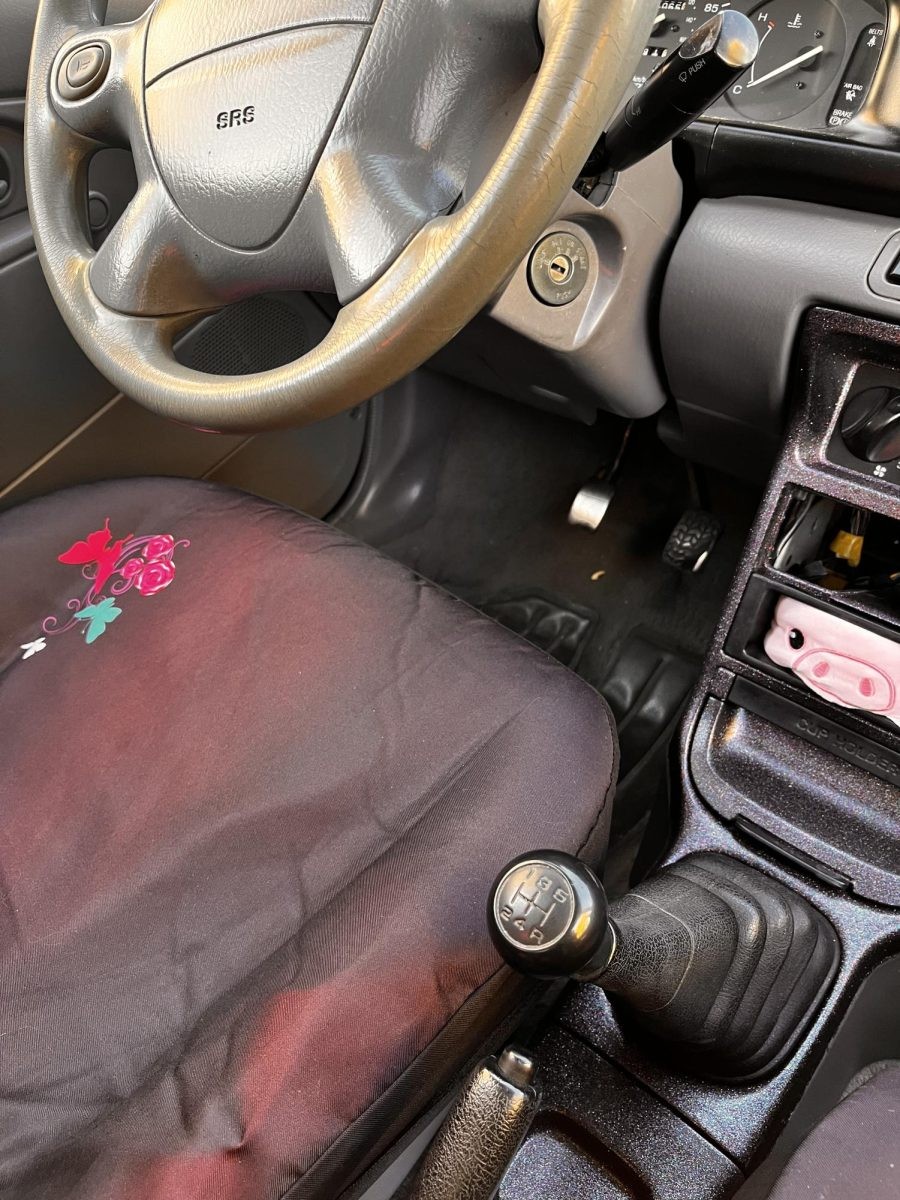Manual Cars, often referred to as stick shifts, are becoming increasingly rare in the automotive world. For many younger drivers, the concept of a clutch pedal and shifting gears might seem like an antiquated relic of the past. When I recently got my first car, a manual transmission, I was met with surprised and often bewildered looks when sharing the news. This reaction, frankly, sparked my curiosity. A little digging revealed that a surprisingly small percentage of drivers in the United States, around 18%, actually know how to operate a manual transmission. This figure is, in my opinion, quite astonishing.
It’s easy to assume that manual transmissions were commonplace during the formative years of Millennials. However, even back in the 1990s, only about 25% of vehicles produced were equipped with them. Today, that number has dwindled to a mere 2.5% of cars sold in the US with a manual option. The rise of electric vehicles, inherently incompatible with manual transmissions, certainly contributes to this decline.
Despite the dwindling numbers and the perception of manual driving as a fading skill, I firmly believe in its enduring importance and the significant advantages it offers. Driving a manual car isn’t just about operating a vehicle; it’s about engaging with the driving experience on a deeper, more connected level.
Enhanced Control and Driver Engagement
One of the primary benefits of driving a manual car is the superior control it offers to the driver. Unlike automatic transmissions that make gear selection decisions for you, a manual transmission puts you in command of the engine’s power and torque. You have direct influence over the engine’s revolutions per minute (RPM) and can precisely select the gear that best suits the driving situation.
This level of control is particularly advantageous in various scenarios. For instance, when descending a steep hill, downshifting in a manual car allows you to use engine braking to control your speed, reducing wear on your brakes and providing a safer, more controlled descent. In snowy or icy conditions, the ability to select a higher gear and modulate the clutch provides finer control over wheel spin, enhancing traction and stability. Automatic transmissions, while constantly improving, can sometimes be less intuitive in these situations, potentially upshifting when you need engine braking or downshifting abruptly in slippery conditions.
Furthermore, driving a manual car fosters a more engaging and involved driving experience. You are not just a passenger directing the vehicle; you become an active participant in the process of driving. The need to coordinate the clutch, gear lever, and throttle demands focus and attention, transforming driving from a passive task into an active and rewarding skill. This engagement can be particularly appealing to driving enthusiasts who appreciate the tactile feedback and the sense of connection with the machine.
Minimizing Distractions and Enhancing Focus
In today’s increasingly distracting world, the demands of driving a manual car can actually be a significant safety benefit. Operating a stick shift requires both hands and focused attention, making it virtually impossible to engage in common distractions like phone use while driving. Unlike automatic cars where one hand is often free to operate a phone or other devices, manual driving necessitates constant hand coordination between the steering wheel and gear lever.
This inherent demand for focus is particularly valuable for younger and less experienced drivers, who are statistically more prone to distractions. The need to pay attention to the engine’s sound and feel to determine shift points, along with the physical act of changing gears, cultivates a heightened awareness of the driving environment and reduces the temptation to engage in risky distracted driving behaviors.
Potential for Improved Fuel Efficiency and Lower Maintenance Costs
While advancements in automatic transmission technology have narrowed the gap, manual cars have historically been associated with better fuel economy and lower maintenance costs. The potential for better gas mileage in manual cars stems primarily from their simpler mechanical design and lighter weight compared to their automatic counterparts. While modern automatics with multiple gears and sophisticated computer controls are becoming increasingly efficient, the inherent simplicity of a manual transmission can still offer a slight edge in fuel consumption, especially in older vehicles.
Moreover, manual transmissions are generally considered to be more robust and less complex than automatics, potentially leading to lower repair costs over the lifespan of the vehicle. While manual transmissions require periodic clutch replacements and may necessitate occasional maintenance, the intricate mechanisms within automatic transmissions are often more expensive and complex to repair or replace. For budget-conscious drivers, particularly those opting for older or used vehicles, the potential for lower maintenance expenses associated with manual cars can be a considerable advantage.
Added Security and Exclusivity
In a somewhat unexpected twist, manual transmissions can offer a degree of theft deterrence. With the majority of drivers in some regions unable to operate a stick shift, a manual car becomes a less appealing target for car thieves. While not foolproof, the presence of a manual transmission can act as a deterrent, potentially causing thieves to move on to easier targets with automatic transmissions.
Furthermore, owning a manual car offers a certain degree of exclusivity in a market increasingly dominated by automatics. It sets you apart as a driver who values engagement, control, and a more traditional driving experience. It can also serve as a subtle deterrent to friends asking to borrow your car, as the limited pool of manual drivers reduces the likelihood of someone being able to operate your vehicle.
Versatility and a Gateway to Broader Driving Skills
Finally, learning to drive a manual car unlocks a broader spectrum of driving skills and vehicle compatibility. Once you master the art of driving a stick shift, transitioning to an automatic transmission is effortless. You gain a deeper understanding of vehicle mechanics and develop a more nuanced feel for how a car operates.
Moreover, being proficient in manual driving opens up the possibility of driving a wider range of vehicles, including classic cars, performance vehicles, and even larger commercial vehicles in some cases. It’s a skill that broadens your driving horizons and connects you to a rich automotive heritage.
Conclusion: Embrace the Manual
Ultimately, the choice between a manual and automatic car is a personal one, dictated by individual preferences and driving needs. However, the benefits of manual cars extend beyond mere transportation. They offer enhanced control, a more engaging driving experience, potential cost savings, and a unique sense of connection with the road. In a world of increasingly automated driving, embracing the manual transmission is a way to preserve a valuable driving skill, enhance driver focus, and rediscover the joy of truly driving. Perhaps it’s time to reconsider the stick shift and appreciate the enduring relevance of manual cars in the modern automotive landscape.

